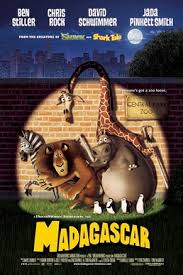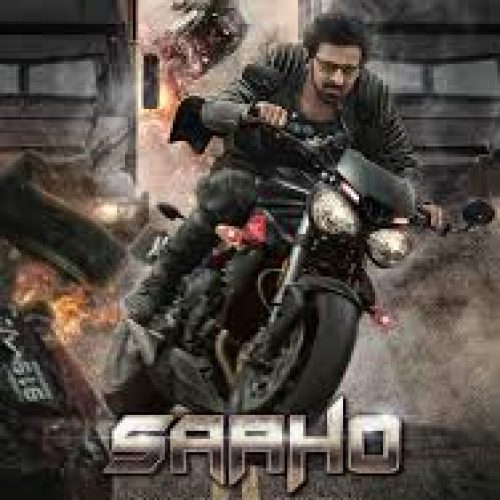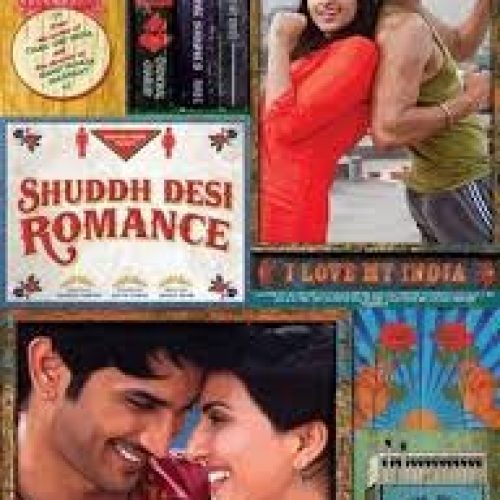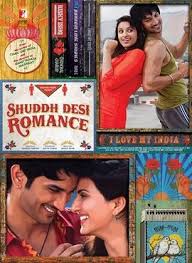Who would have thought a group of pampered zoo animals would find themselves navigating the wild? Released in 2005, Madagascar is an animated adventure comedy featuring the voices of Ben Stiller, Chris Rock, David Schwimmer, and Jada Pinkett Smith. Set in New York City’s Central Park Zoo and the untamed landscapes of Madagascar, the film captures the misadventures of four zoo animals as they transition from the luxury of human care to the unpredictability of the wild. Directed by Eric Darnell and Tom McGrath, the movie is a blend of slapstick humor, heartfelt moments, and visually vibrant animation that appeals to children and adults alike. It falls squarely in the family-friendly, animated comedy genre.
The story kicks off in the heart of New York City, where Alex the lion (voiced by Stiller) enjoys being the star attraction at Central Park Zoo. His friends—Marty the zebra (Rock), Melman the giraffe (Schwimmer), and Gloria the hippo (Pinkett Smith)—lead equally cushy lives. Marty, however, is yearning for something more and decides to venture into the wild, leading his friends on an unexpected adventure. What begins as an innocent escape from zoo life soon turns into a whirlwind of chaos as the animals end up in Madagascar, an island very different from their comfortable enclosures. Faced with new challenges, including how to fend for themselves and interact with the local wildlife, the group must adapt to their new environment while keeping their friendship intact.
One of the film’s standout features is the voice acting, especially the comedic performances by Ben and Chris. Stiller’s Alex, with his larger-than-life personality, perfectly captures the egocentric yet lovable lion, while Rock’s Marty brings energy and humor to the zebra’s existential crisis. Chris’s delivery of Marty’s lines is impeccable, providing some of the film’s most memorable comedic moments, like his naïve optimism about life in the wild. Schwimmer’s neurotic Melman and Pinkett Smith’s sassy Gloria round out the group, creating a diverse set of characters that bounce off each other with great chemistry. The secondary characters also steal the show at times, particularly the scene-stealing penguins, who hatch a hilarious escape plan, and Sacha Baron Cohen as King Julien, the eccentric lemur king who is obsessed with dancing.
The direction by Darnell and McGrath is sharp, keeping the film’s pace lively and engaging, particularly for its younger audience. The humor is well-balanced, with enough slapstick and visual gags for kids, while the witty dialogue and subtle jokes cater to adults. The filmmakers excel in maintaining a sense of fun and adventure throughout the movie, blending it with moments of tension and character development that give the story emotional depth. Despite its fast pace, the film still manages to convey important themes, such as friendship, identity, and the idea of home, without becoming too heavy-handed.
Visually, the movie is a treat, with DreamWorks’ animation team bringing both New York City and Madagascar to life in vivid detail. The contrast between the sleek, structured world of the zoo and the vibrant, chaotic beauty of the wild is captured beautifully through animation. The landscapes of Madagascar are lush and colorful, with the wildlife full of personality and humor. The characters themselves are designed to be highly expressive, their exaggerated features and movements adding to the film’s comedic appeal. The animation shines in scenes where the animals attempt to mimic their previous zoo routines in the wild, particularly Alex’s hilarious struggle to maintain his “king of the jungle” persona.
The music, composed by Hans Zimmer, is another strong element of the film. Zimmer’s score complements the energy and comedic tone, with upbeat tracks that match the fast pace of the story. The iconic song “I Like to Move It” by Reel 2 Real, performed in the film by King Julien, becomes an unforgettable moment, injecting a burst of fun that audiences can’t help but groove along to. The soundtrack overall keeps the mood light and playful, enhancing the movie’s vibrant, fun-filled atmosphere.
Special effects and sound design are used effectively, especially in sequences where the animals interact with their environment. Whether it’s the cacophony of city noises at the zoo or the natural sounds of the jungle, the soundscapes are rich and immersive. The water, vegetation, and animals are animated with a sense of texture that makes even the most fantastical scenes feel grounded in a cartoonish reality. The movie’s editing keeps these elements in perfect balance, ensuring no scene drags on too long while maintaining a cohesive flow that keeps viewers engaged.
Beyond the humor and visuals, the film subtly tackles deeper themes about self-discovery and the meaning of freedom. Marty’s desire to experience the wild and escape the confines of the zoo parallels the human yearning for adventure and breaking free from the mundane. The animals’ adjustment to the wild also reflects the theme of adaptability—learning to thrive in unfamiliar environments, much like the challenges we all face in new situations. It’s these deeper undercurrents that elevate Madagascar from being just a light-hearted animation to a film with emotional resonance.
In conclusion, this animated adventure is an entertaining mix of humor, heart, and visual splendor. With stellar voice performances from the lead cast, especially Ben and Chris, and brilliant direction that keeps the energy high, it’s a film that knows how to entertain. The animation, paired with Zimmer’s lively score and a fun plot, makes it a standout in the family genre. While it may not delve too deeply into complex narratives, its charm lies in its simplicity and the joy it brings. Whether you’re a child or an adult, Madagascar offers something for everyone—a fun ride that’s well worth the trip to the wild. For anyone looking for a feel-good film with colorful animation, clever humor, and endearing characters, this one is highly recommended.







